Cash intensive businesses
 Operating a cash intensive business is often accompanied by poor record keeping as well as the lack of any meaningful internal controls. These two factors make it difficult, if not impossible, to determine the taxpayer’s operations, financial condition, and most important, whether the taxpayer’s tax returns are true and accurate. Where tangible evidence concerning the taxpayer’s business is absent, an IRS agent will have to rely on the oral testimony of the taxpayer as it relates the financial information contained in the taxpayers returns in order to determining whether the taxpayer’s testimony is credible.
Operating a cash intensive business is often accompanied by poor record keeping as well as the lack of any meaningful internal controls. These two factors make it difficult, if not impossible, to determine the taxpayer’s operations, financial condition, and most important, whether the taxpayer’s tax returns are true and accurate. Where tangible evidence concerning the taxpayer’s business is absent, an IRS agent will have to rely on the oral testimony of the taxpayer as it relates the financial information contained in the taxpayers returns in order to determining whether the taxpayer’s testimony is credible.
A taxpayer, who is not represented by an attorney, is at a clear disadvantage when the IRS comes calling. A nervous response or responses to confusing questions may result in the examiner forming a negative opinion of the taxpayer and a decision to expand the scope of the examination or make a criminal referral. A taxpayer operating a cash intensive business should never submit to an IRS interview without the presence of an experienced tax attorney.
IRS examination of a cash intensive business entails:
- Conducting an initial interview of the taxpayer to determine how cash is handled from the time the income is received to the time the income is deposited into a bank account or spent. This is a painstaking process where the IRS agent tries to understand the taxpayer’s business cycle and the identity of the individuals involved in handling the cash. The taxpayer has to explain in detail the mechanics of cash handling. This involves each step in the process including collection of gross receipts from every source and the manner in which cash sales are recorded.
- Preparing a cash flow chart reflecting the time cash is received to the time it is placed in the hands of a third party. The flow chart will also contain the names of each individual who has contact with the cash at each point. Following its preparation, the agent will ask the taxpayer if the flow chart is correct. The above process will likewise be applied to cash disbursements. An agent will want to know who is authorized to pay cash and where the cash comes from. Where expenses are paid in currency, the agent will inquire as to how the expenses are recorded, whether a receipt was retained, whether the transaction was entered into books and an explanation as to how the disbursement is included in determining net income or a net loss.
- Determining whether the taxpayer has an accounting system in place, and if so, who is responsible for maintaining the records. This a critical part in the examination. The examiner will ask about cash-on-hand that the taxpayer has access to, including funds available from friends or relatives. The agent is required to explain to the taxpayer that cash-on-hand includes pocket money plus cash in a safe or other location, and cash held in trust by others. The taxpayer’s responses to the agent’s questions will be taken down in detail and often times are accompanied by actual quotes from the taxpayer.
- Developing data related to the taxpayer’s business and related businesses and determining whether any related party transactions exist. The IRs agent will ask about any recurring losses that are reflected on the taxpayer business or personal returns and attempt to determine what caused the losses and whether any remedial action has been taken by the taxpayer.
- Careful scrutiny as to whether the taxpayer is commingling funds from his business accounts with his/ her personal bank accounts or his/ her immediate family member’s bank accounts. In this regard, the agent will inquire about the existence of any bank or personal loans, accounts payable and other borrowed funds as well as personal loans made to or from family members.
Take Away
With all the scrutiny and complexity embedded in cash intensive businesses by the IRS, operating a cash intensive business presents significant risks in terms of the tax and potential criminal consequences. If you operate a cash intensive business and have been notified of an IRS examination, it is important that you immediately seek the advice of an experienced and knowledgeable tax attorney prior to ever speaking with anyone. In some cases, IRS agents will show up at the taxpayer’s place of business or home, in an attempt to catch the taxpayer off guard. Should this happen to you, you should always refrain from answering any questions and ask to have an attorney present.

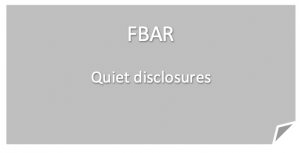 In April 2020, a Florida man pleaded guilty to tax evasion and the willful failure to file FBAR’s. What makes this case particularly interesting is that the taxpayer made use of a “quiet disclosure” rather than entering into the Offshore Voluntary Disclosure Program (OVDP). This is a classic case of greed on steroids.
In April 2020, a Florida man pleaded guilty to tax evasion and the willful failure to file FBAR’s. What makes this case particularly interesting is that the taxpayer made use of a “quiet disclosure” rather than entering into the Offshore Voluntary Disclosure Program (OVDP). This is a classic case of greed on steroids. Real estate ownership in a Self-Directed Investment Retirement Account (IRA) can provide certain tax benefits to taxpayers who are considering an investment in real estate. However, a retirement account considering such a strategy should be familiar with IRS rules and potential tax consequences associated with violating those rules.
Real estate ownership in a Self-Directed Investment Retirement Account (IRA) can provide certain tax benefits to taxpayers who are considering an investment in real estate. However, a retirement account considering such a strategy should be familiar with IRS rules and potential tax consequences associated with violating those rules.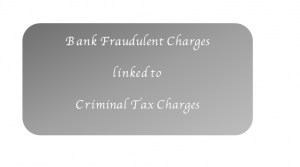 The temptation to use unfilled or altered tax returns as well as doctored financial statements for purposes of securing a bank loan, while not common, does occur. This practice typically occurs where an individual is faced with financial difficulties and sees no other way out. The consequences of submitting false documents including unfiled and false returns are strong evidence of the willful failure to file income tax returns as well as income tax evasion.
The temptation to use unfilled or altered tax returns as well as doctored financial statements for purposes of securing a bank loan, while not common, does occur. This practice typically occurs where an individual is faced with financial difficulties and sees no other way out. The consequences of submitting false documents including unfiled and false returns are strong evidence of the willful failure to file income tax returns as well as income tax evasion.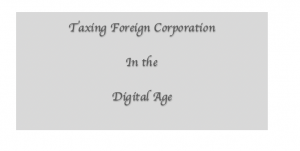 Foreign entities that deliver digital goods and services using the internet as a point of distribution may be subject to U.S. income tax. The nature and character of the goods and services will dictate how the income is taxed. In the interest of clarity, the following discussion is limited to effectively connected income.
Foreign entities that deliver digital goods and services using the internet as a point of distribution may be subject to U.S. income tax. The nature and character of the goods and services will dictate how the income is taxed. In the interest of clarity, the following discussion is limited to effectively connected income.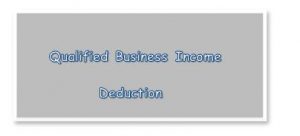 On September 24, 2019, the IRS issued
On September 24, 2019, the IRS issued 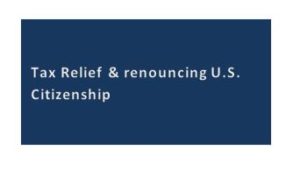 The new procedures attempt to address problems faced by some U.S. citizens, whose only connection with the United States is that they were born in America. Many of these individuals have been living overseas since an early age, and in some cases, are also citizens of the foreign country in which they reside.
The new procedures attempt to address problems faced by some U.S. citizens, whose only connection with the United States is that they were born in America. Many of these individuals have been living overseas since an early age, and in some cases, are also citizens of the foreign country in which they reside.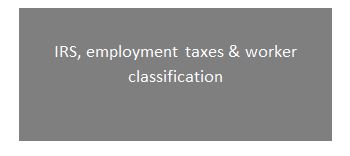
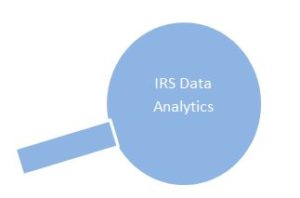 During the last decade, the Internal Revenue Service has been limited in its ability to ferret out tax cheats, due, in large part, to a 17% cut in its budget in 2010 as well as a 14% reduction in its labor force. Despite dwindling monetary and human resources, the Agency has been able to keep up with its investigations thanks to advance in information technology.
During the last decade, the Internal Revenue Service has been limited in its ability to ferret out tax cheats, due, in large part, to a 17% cut in its budget in 2010 as well as a 14% reduction in its labor force. Despite dwindling monetary and human resources, the Agency has been able to keep up with its investigations thanks to advance in information technology.
